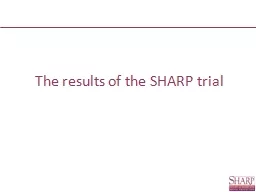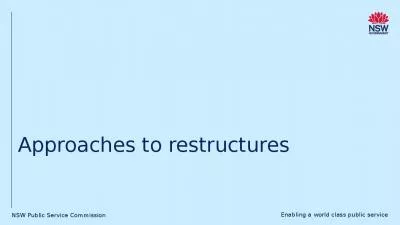PPT-SHARP Restructure [Insert Briefer’s Name]
Author : emma | Published Date : 2024-02-03
Insert Date SHARP Future Workforce IRC Implementation dated 13 OCT 21 2 1 AUG 23 Background In September 2021 SecDef directed implementation of the recommendations
Presentation Embed Code
Download Presentation
Download Presentation The PPT/PDF document "SHARP Restructure [Insert Briefer’s ..." is the property of its rightful owner. Permission is granted to download and print the materials on this website for personal, non-commercial use only, and to display it on your personal computer provided you do not modify the materials and that you retain all copyright notices contained in the materials. By downloading content from our website, you accept the terms of this agreement.
SHARP Restructure [Insert Briefer’s Name]: Transcript
Download Rules Of Document
"SHARP Restructure [Insert Briefer’s Name]"The content belongs to its owner. You may download and print it for personal use, without modification, and keep all copyright notices. By downloading, you agree to these terms.
Related Documents

![PPT-SHARP Restructure [Insert Briefer’s Name]](https://thumbs.docslides.com/1044343/sharp-restructure-insert-briefer-s-name-l.jpg)




![[Insert Tagline] [Insert or Customize](https://thumbs.docslides.com/633984/insert-tagline-insert-or-customize.jpg)
![[Insert Project Name] Detailed Design Review (DDR)](https://thumbs.docslides.com/672195/insert-project-name-detailed-design-review-ddr.jpg)

![[Insert Project Name] Preliminary Design Review (PDR)](https://thumbs.docslides.com/712806/insert-project-name-preliminary-design-review-pdr.jpg)



![[Insert Organization and/or Presenter Name]](https://thumbs.docslides.com/1028606/insert-organization-and-or-presenter-name.jpg)
